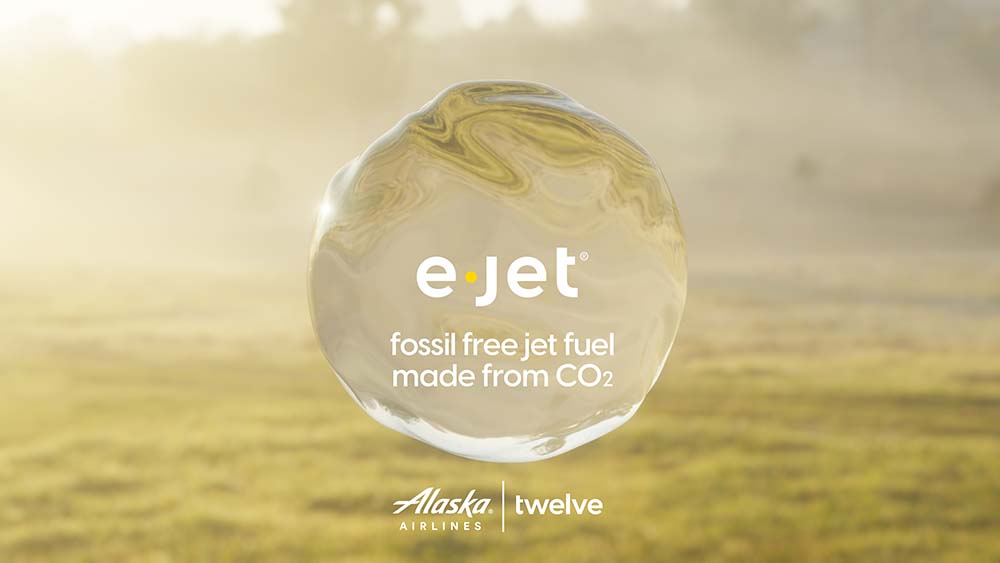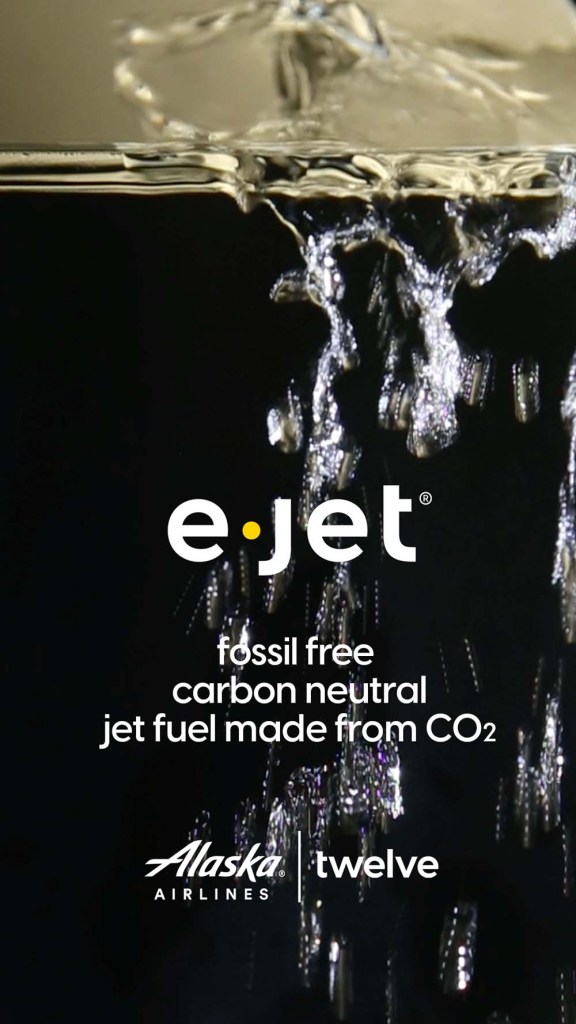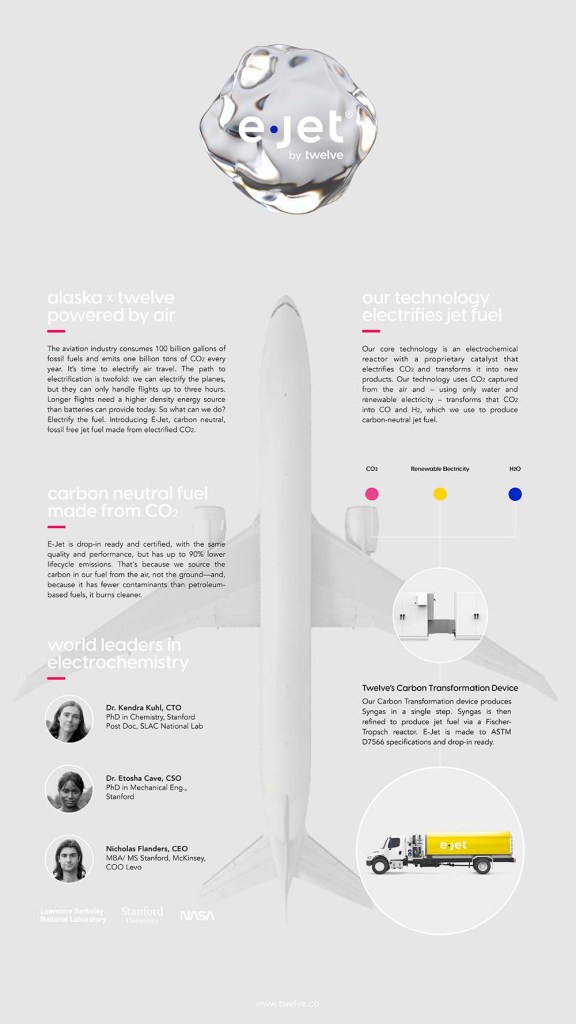Alaska Airlines, Microsoft and Twelve partner to advance new form of sustainable aviation fuel
Share

Aviation is all about journeys—to visit family, for great adventures, to do business. At Alaska, we’re also on a journey to improve our impact on the environment and we’ve set ambitious goals to measure our progress, with a long-term target of zero carbon emissions by 2040.

But we know we can’t do it alone—succeeding in this journey requires new solutions and great partners. Today, we’re excited to kick off a new partnership we have with Microsoft and Twelve, a carbon transformation technology company, to advance sustainable aviation fuels (SAF). Together with the innovators at Twelve, recently named one of Fast Company’s Most Innovative Companies, we’ll work together to bring it’s E-Jet®—a low carbon jet fuel produced from recaptured CO2, water and renewable energy — into commercial use.
As part of the collaboration, we will work towards a demonstration flight using one of our aircraft powered by E-Jet®. After testing is complete, the goal is to use some of the fuel to reduce the climate impact of Microsoft’s business travel on us.
What is SAF?
SAF comes from many sources, including captured methane from landfills, forestry waste, and agricultural residues, rather than from fossil fuels. It provides the greatest opportunity to make a step-level change in the climate impact of aviation within the next couple of decades. It is a safe, certified fuel that meets all jet fuel standards to reduce carbon emissions by as much as 80% on a lifecycle basis. SAF is a “drop-in fuel” meaning it can be incorporated into existing jet fuel transportation and storage, such as at San Francisco International Airport (SFO), where blended fuel travels through a pipeline to airports to be used on aircraft.
SAF is a core part of Alaska’s five-part pathway to net zero by 2040. Since 2010, we have worked with various public and private partners to advance policies needed to jumpstart the nascent SAF market and create new offtake agreements that cultivate partnerships to accelerate market development. In 2011, we were the first domestic carrier to fly multiple scheduled routes powered by a SAF blend, and as mentioned, we are using blended SAF regularly in SFO. Alaska was also a founding member of the Aviators Group of the Sustainable Aviation Fuel Buyers Alliance, announced at COP26, bringing an operator’s perspective to collaborations driving demand and supply.

However, there is not enough SAF volume to shift the market toward cleaner fuels—currently less than 1% of total fuel available is SAF—and the price is three to five times more than conventional jet fuel.
Scaling SAF and making it available at a commercially viable cost and scale requires change on several fronts—from passing legislation to support a federal Blenders Tax Credit to bringing new forms of SAF to market from a variety of feedstock sources. Twelve’s E-Jet® helps address this latter issue, by bringing exciting new technology into action to advance new sources of SAF, making direct use of recaptured carbon dioxide.
Keep an eye out for updates as this partnership takes off!

This announcement also appeared on PRNewswire.
